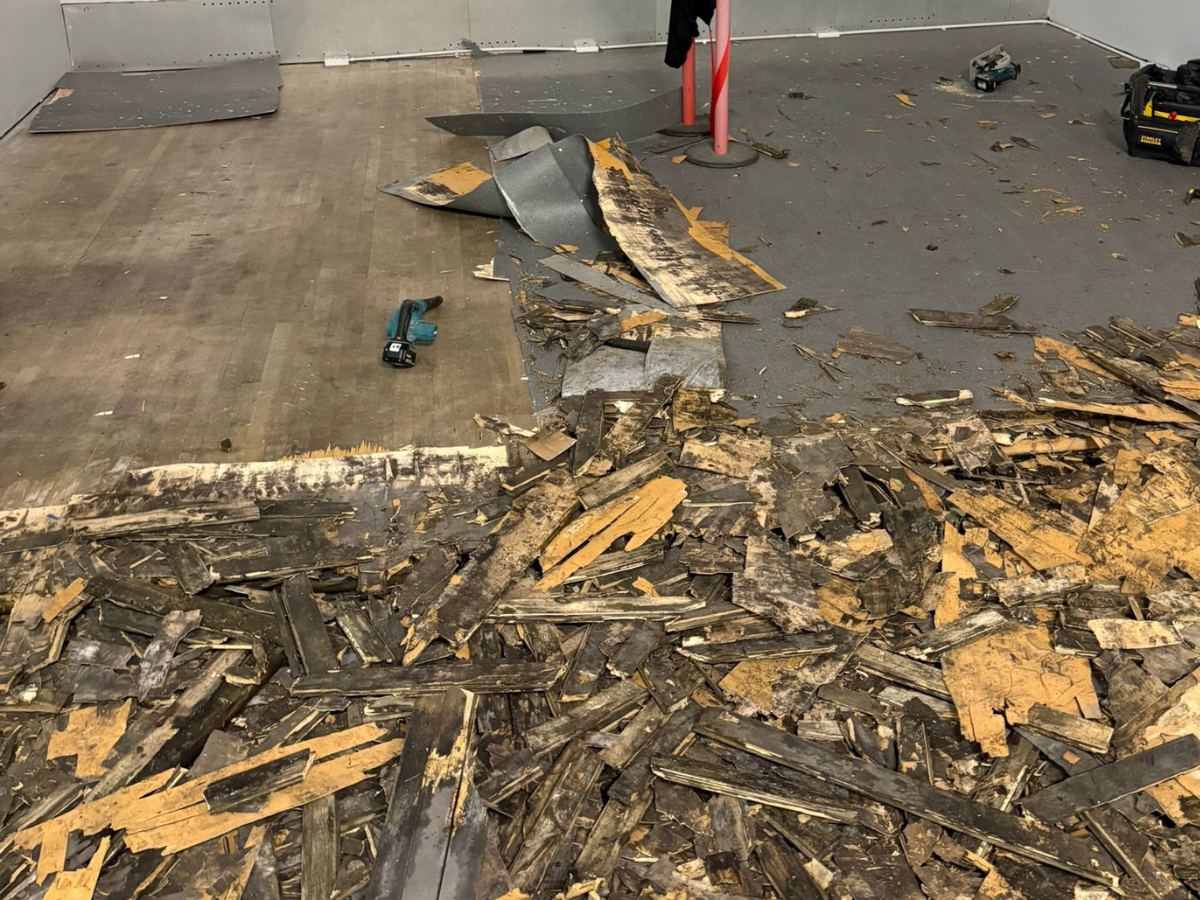When people think about flooring problems like gaps, lifting, or warping, they often blame the product or installation. But in reality, one of the biggest and most overlooked factors that affects how long your floor lasts is the temperature and humidity in the space. Whether you have real wood, laminate, or LVT click flooring, all materials react differently to changes in the environment. Understanding how and why can save you money and help you keep your floors looking good for years.
Why Temperature and Humidity Matter
Every flooring material expands and contracts when exposed to changes in temperature and moisture. The air inside a home or commercial space is constantly changing. During winter, heating systems dry the air, reducing humidity levels. In summer, warm humid air can bring moisture back into the materials. When the air gets too dry, certain floors shrink and form small gaps. When it is too humid, they swell, sometimes lifting or buckling under pressure.
Wood based flooring, like real wood and laminate, is especially sensitive to moisture. Even products like LVT (luxury vinyl tile) and vinyl flooring, which are more stable, can still respond slightly to extreme temperature swings. This natural movement does not mean the product is bad, it is just how materials behave. The trick is managing those changes before they cause visible damage.
How Different Floors React
Real Wood Flooring:
Real wood floors are natural materials that breathe with their environment. When humidity rises, wood fibers absorb moisture and expand. When humidity drops, they release moisture and shrink. That is why you sometimes notice tiny gaps between boards in the winter. Engineered wood handles this better than solid wood because of its layered structure, but it still needs the right conditions. Ideally, the room should stay between 18 and 24 degrees Celsius with relative humidity between 40 and 60 percent.
Laminate Flooring:
Laminate is made from compressed wood fibers, so it reacts in a similar way to real wood, just not as dramatically. If the subfloor has moisture or the air is too damp, laminate boards can swell at the edges and cause the surface to lift or bubble. If the air is too dry, small gaps can appear at the joints. Laminate flooring works best in climate controlled environments and should always have an expansion gap around the perimeter to allow for natural movement.
LVT Click and Glue Down Flooring:
Luxury vinyl tile, especially the click system, can expand slightly in very warm temperatures. For example, in conservatories or rooms with direct sunlight, you might see small movements if expansion gaps were not left during installation. Glue down LVT flooring tends to be more stable because it is fixed firmly to the subfloor, but both types can still be affected by extreme changes. The main difference is that LVT does not absorb water like wood, so it will not swell or warp in the same way.
Common Signs of Temperature and Humidity Problems
- Floors creaking or lifting slightly at the joints
• Small gaps appearing between boards or planks
• Warping or cupping where the edges of boards curl upward
• Bubbles or lifting in vinyl or LVT flooring
• Uneven surfaces that were not present after installation
These signs do not always mean the product or installation was poor. More often, they show that the environment has changed beyond what the material can handle comfortably.
How to Prevent Flooring Damage
The best way to prevent temperature and humidity issues is to control the indoor environment. This is especially important right after installation when the floor is still acclimating to the room.
Acclimatise Your Flooring:
Before installation, your flooring should sit in the room for at least 48 hours to adjust to the temperature and humidity. This step lets the material stabilise so it does not expand or shrink once laid.
Use the Right Underlay and Barriers:
When fitting laminate or real wood floors, always use underlay with a built in damp proof membrane if the subfloor is concrete. For LVT click flooring, use underlays designed specifically for vinyl to support stability and insulation.
Control Indoor Conditions:
Keep your home or building at a steady temperature year round. Avoid letting rooms get extremely cold or hot for long periods. If you live in a humid area, consider using a dehumidifier during summer. If the air is dry in winter, a small humidifier can help maintain balance.
Be Careful with Cleaning and Water:
Too much water on your floor, even from mopping, can change its moisture balance. Use slightly damp mops and make sure spills are wiped up quickly, especially with wood or laminate.
Long Term Care
Flooring is a long term investment, so understanding how it reacts to your environment helps it last longer. Real wood flooring can last decades if cared for properly, and even laminate or LVT can look fresh for many years when installed and maintained in the right conditions. It is not just about cleaning or polishing, it is about giving your floors a stable, consistent environment where they can perform as designed.
To Wrap Things Up
Temperature and humidity might not be things you think about daily, but they play a huge role in how your flooring behaves and lasts. From real wood to laminate and LVT click or glue down systems, every material has its limits. The more you understand about how these changes affect your floors, the fewer surprises you will have down the line.
If you are ever unsure about whether a room is suitable for a certain type of flooring, or how to prevent moisture problems before fitting, it is always worth getting advice from an experienced installer. It is often the small details like expansion gaps, subfloor prep, and acclimatisation that make the biggest difference between a floor that lasts a few years and one that lasts a lifetime.



